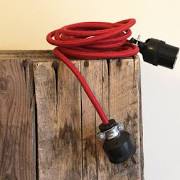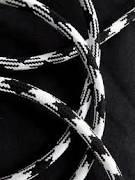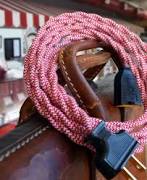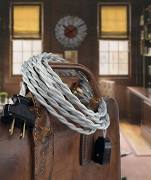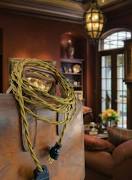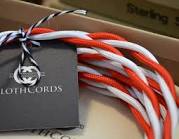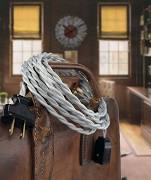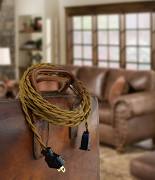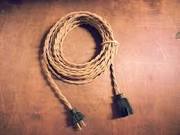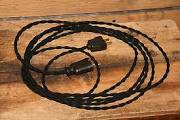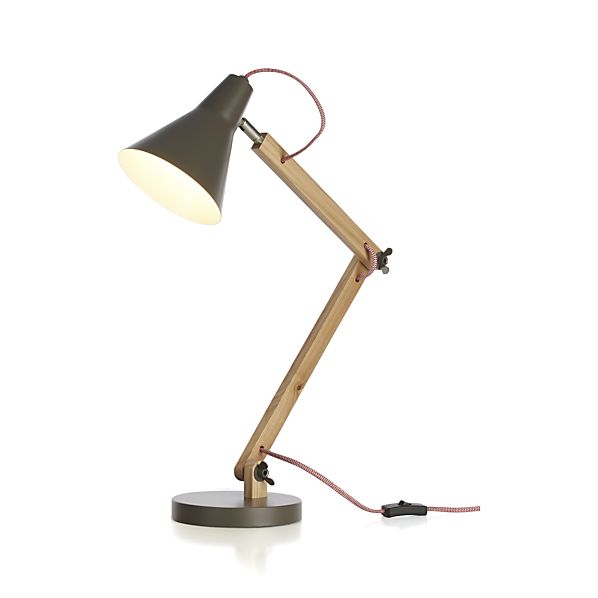
Submitted questions will be posted with my response by the following Tuesday or before.
Submitted comments will be moderated and approved within 24 hours.
Eyeglass Lenses, Coatings and Frames
Question from Cindy
Hi Debra,
My husband and I both need to get glasses and are having a hard time finding the frames and lenses we believe would be non or least toxic. Please help!
Lenses
Regarding eyeglass lenses, in a 2008 post you said, “The thing to remember about polycarbonate is that the concern is not outgassing, but leaching into food and water from contact. Since our skin does not contact the eyeglass lens, I don’t believe there is a problem with toxicity during use.”
Wikipedia states that “CR-39 should not be confused with polycarbonate, a tough homopolymer usually made from bisphenol A.[3]” BPA? Wouldn’t wearing BPA be a concern even if there’s no skin contact?
Do you still believe that all of the following lens materials are relatively nontoxic: high Index plastic, Tribrid, Trivex and CR-39 plastic?
And or true of all eyeglass lenses since they’re not touching the skin? Do any outgass or pose other toxicity hazards?
I’ve listed below what I could find on the above materials in case you’re unfamiliar with them.
Tribrid. All about vision’s site says, “Tribrid lenses were created by merging elements of PPG’s lightweight, impact-resistant Trivex lens material with those of established high-index plastic lenses.”
Trivex. I’ve read that “Trivex lenses are composed of a newer plastic that has the same characteristics as polycarbonate lenses.” all about vision’s site says, “Trivex lenses, however, are composed of a urethane-based monomer and are made from a cast molding process similar to how regular plastic lenses are made…”
CR-39 Wikipedia says, “The abbreviation stands for “Columbia Resin #39… CR-39 is made by polymerization of diethyleneglycol bis allylcarbonate (ADC) in presence of diisopropyl peroxydicarbonate (IPP) initiator. The presence of the allyl groups allows the polymer to form cross-links; thus, it is a thermoset resin…
The polymerization schedule of ADC monomers using IPP is generally 20 hours long with a maximum temperature of 95°C. The elevated temperatures can be supplied using a water bath or a forced air oven.
Benzoyl peroxide (BPO) is an alternative organic peroxide that may be used to polymerize ADC. Pure benzoyl peroxide is crystalline and less volatile than diisopropyl peroxydicarbonate. Using BPO results in a polymer that has a higher yellowness index, and the peroxide takes longer to dissolve into ADC at room temperature than IPP.”
Coatings
Regarding RX eyeglass coatings UV protection, anti-glare and anti-scratch are widely recommended and seem sensible. Do you know if they are generally safe or which are more or less toxic?
Frames
Debra, after reading your 2008 post about eyeglass frames and looking further into them, I agree that zyl (zylonite, or cellulose acetate) or frames made from propionate, a nylon-based plastic seem like good choices.
But in terms of finding the styles we like and hopefully frames covered by our insurance plan, we’d like some additional options. What do you think of aluminum, titanium, nickel or stainless steel frames? Many are blends of these– any thoughts on blends?
Also, you said you wear metal frames, do you think they’re a less toxic choice than plastic? Any long term health concerns with EMFs from metal frames? We would be wearing our RX glasses most of the day.
Thank you. Anything you can do to allay our anxiety on picking out the least toxic glasses would be greatly appreciated!
Debra’s Answer
Lenses
OK. To start, I haven’t been able to find anything which states that BPA is a hazard from outgassing, only ingestion. Recommendations are to not eat canned food or beverages, or drinking water from polycarbonate bottles. Also don’t allow your dentists to apply dental sealants made from BPA (BADGE). But there are no warnings about not wearing polycarbonate glasses.
Polycarbonate is a very hard plastic, and these don’t outgas the way soft plastics do. So I have no reason to believe that you would have any exposure to BPA from wearing the glasses. That said, you would probably get some exposure to BPA from touching the glasses, so when cleaning them, touch them only with the cleaning cloth and not your bare fingers.
All of the plastics you mention are hard plastics, so they would not outgas much, if at all. I couldn’t get any more information that you got on the exact materials, but I would say they probably don’t contain BPA as polycarbonate does, so any one of them would be better in that regard.
Coatings
Like lenses, it’s difficult to find information on the materials used to make coatings.
I was abole to find that Teflon is use to make coatings that are scratch-resistant, anti-static, and reduced-glare.
Anti-reflective coatings may contain magnesium fluoride or fluoropolymers.
But whether or not the presence of these chemicals would result in an actual exposure, I don’t know. Teflon needs to be heated to cooking temperature to release it’s toxic gas. Fluoride is a particle that is likely bound up in the coating and would not offgas.
Regardless, these exposures would be extremely small, if any.
Frames
Metal vs plastic frames?
In 2008, when I wrote my last post on this subject, I preferred metal frames over plastic. But after researching the plastic used to make frames, and finding that it is usually plant based, I’ve been wearing plastic frames. As stated before, metal frames were giving my skin a rash at the points where they touched my face.
At the moment I am wearing my favorite glasses of all time, a pair of readers with bamboo temples that I got from Peepers. A number of companies are making them now. There’s quite a selection online.
Non toxic athletic shoe insole replacement
Question from di
I’m looking for an athletic shoe insole replacement that doesn’t have anti-microbials in it.
Is there such a thing?
I need it for a Men’s New Balance athletic shoe.
thanks.
di
Debra’s Answer
Readers? Any suggestions?
Removing Odor From Car Interior
Question from edward
I have a Honda accord 2010, seats are fine as they are leather, but the plastic/vinyl dashboard and carpet although 2010 is still, strong.
I’m looking for something non toxic odorless to neutralize and give fresh air. Have tried ozone/ultra violet treatments and it works for a week only, fresh air and sun.
Debra’s Answer
I contacted OdorKlenz to see if any of their products would work for this. Here is their reply:
We have had Customers use our OdorKenz Skunk or OdorKLenz-S to remove fragrances and odors from their cars. If they are able to use a carpet extractor then I would go with the OdorKlenz-S to get the rugs and upholstery done but if it is a simple wipe down and cleaning then the OdorKLenz Skunk would be fine. Both will work in this case just a matter of personal preference. Your readers can use code Savings1 at checkout to receive 30% off .
Microbial Shield
Question from Donna
Hi Debra,
We recently found mold in our basement and used a company to clean and remove it with a hydrogen peroxide formula. We have used this company before, as they do excellent work, and have had no problems with their products (my son has chemical sensitivities).
However, there was a coffee table in the basement which I was planning to use upstairs in the family room, and it got coated with their microbial shield. They say the main ingredient in the shield is a food preservative, but I am concerned as the table will be touch a lot and probably eaten off of.
Attached is a link to their MSDS. Do you think this is safe? Would coating the table with AFM Safecoat help? Thank you as always! Donna
Debra’s Answer
According to their MSDS, the microbial shield contains 2-butoxy ethanol.
It’s in the NIOSH Pocket Guide to Chemical Hazards
Symptoms irritation eyes, skin, nose, throat; hemolysis, hematuria (blood in the urine); central nervous system depression, headache; vomiting
Target Organs Eyes, skin, respiratory system, central nervous system, hematopoietic system, blood, kidneys, liver, lymphoid system
Remember this is for workers who are having direct contact with this chemical.
This is a volatile organic chemical (VOC), so it may be that it has already evaporated. If so, and all that’s left is the food preservative, it should be fine.
If you feel safer coating it with AFM Safecoat, go ahead. That would give you a finish that you know is safe.
Pillows
Question from Cindy
I’ve read so many conflicting things on the Internet about pillows. Some say pillows cause neck pain, while others say you must have a pillow to support your neck & that it’s the size of the pillow that makes the difference. What are your thoughts on this, & what kind of pillows would you recommend, if you do? Thank you so much for all you do.
Debra’s Answer
This isn’t really a toxics question, and I’m not a chiropractor, but I can tell you my experience.
For years I have been sleeping on a regular pillow with a neck roll. I love this neck roll so much I take it with me when I travel. I put it under my neck and then my head is on the regular pillow. No neck pain with this.
I have pillows from Shepherd’s Dream and USAlpaca. My neck roll is from Shepherd’s Dream.
I recommend any pillows made with natural fibers that you are comfortable with. You can find natural fiber pillows on the Beds & Bedding page of Debra’s List and the Bedding Only page of Debra’s List.
Crypton Super Fabrics
Question from Stacey
Hi Debra,
I am trying to find a less toxic carseat/booster seat for my children. I did check Healthy Child but the list is outdated and I question the testing and results since the same brand can have the safest and worst car seat listed…
I did find some seats made by Clek Olli that are made of “Greenguard Crypton Super Fabrics” which “provide permanent protection against stains, moisture and odor-causing bacteria and are free of brominated and chlorinated flame retardants.” Of course I like that it is supposedly free of these flame retardants, but I wonder about the safety of other chemicals used to make it stain, odor, and microbial resistant. Have you heard of Crypton Superfabrics or have any recommendation about it’s safety? All car seats and boosters seem pretty toxic, so I feel it’s just a guessing game choosing a safer car seat, if that’s possible. Thanks so much, Debra, for all the great advice!
Debra’s Answer
It took me a while to find the information on this product, but I found it at www.hytex.com/pdf/Crypton.pdf.
This is considered a “green” product.
There are four requirements for creating
new collections:
01. Select fiber content that is either:
(a) 50-100% recycled
(b) 100% heavy-metal-free polyester
(c) 100% wool with heavy-metal-free dyes
(d) 100% polypropylene
We don’t know which fabric is on your carseat, but any one of these is better than most other carseats.
Read more at the link about how these fabrics must meet emissions standards.
It is GREENGUARD Indoor Air Quality Certified and GREENGUARD Children & Schools Certified. It’s also has the SCS Indoor Advantage Gold certification and the “Cradle to “Cradle” certification, which disallows a whole list of toxic chemicals.
What I can say is given the type of product you are considering, this choice is very probably a lot less toxic than most others on the market.
Here’s the thing for me. Would I sleep on this fabric? No. I just don’t go near synthetic fabrics of any kind, toxic or not toxic. Synthetics just make my skin creep. I’d use the wool version.
But absolutely it’s a better choice than most other carseats.
Lead-Free Cloth Extension Cords
Question from STAR
Hi,
I was wondering where I could purchase lead free etc. extension chords.
Thanks!
Debra’s Answer
I’m so glad you asked this question! I just struck a gold mine of possibilities for you.
I searched on “lead-free extension cord” and got zero results.
Then I tried “cloth extension cord” and bingo!
Why are we concerned about lead on extension cords? Because virtually all extension cords and cords of any kind contain lead, known to the state of California to cause cancer. Many products now carry this warning:
WARNING: Handling the power cord on this product will expose you to lead, a chemical known to the State of California to cause [cancer and] birth defects or other reproductive harm. WASH HANDS AFTER HANDLING
All power cords for all products. All extension cords, All surge protectors.
It takes only seconds for your skin to absorb lead from touching cords, lead paint, or anything else containing lead.
The European Union has ban[ned] the placing new electrical and electronic equipment on the EU market containing more than agreed levels of lead, cadmium, mercury, hexavalent chromium, polybrominated biphenyl (PBB) and polybrominated diphenyl ether (PBDE) flame retardants.” Their cords are RoHS (Restricion of Hazardous Materials) compliant.
But I couldn’t find any internet source of RoHS compliant cables available for consumer purchase. There’s a business someone should start.
So cloth-covered cord is the solution for the moment. You can even find some products now with cloth-covered cord, like this lamp I bought from Crate & Barrel.
IKEA and flame retardants
Question from Lisa
I contacted IKEA about an article I read but I don’t fully know what to make of the response. I read an article about IKEA intending to phase out flame retardants by 2010. Did this happen? What were they replaced with? Do you have any furniture without polyurethane foam, if so what do they contain?
They Responded:
Hello Lisa,
Thank you for taking the time to write us.
All mattresses sold in the US have to meet regulatory fire retardant standards. IKEA uses organic phosphorous/nitrogen containing compounds in its flame retardants for most of our mattress product range and phased out all chlorinated tris flame retardants from our mattresses in 2010. IKEA also banned the use of the brominated flame retardant PBDE in 1998. None of our mattresses contain this chemical.
However, our MORGONGAVA and SULTAN HEGGEDAL natural material spring mattress does not contain any flame retardants. This mattress is manufactured using natural wool wadding, which allows it to exceed all regulatory flame retardant standards and be fully compliant with California TB117.
Also, all mattresses are tested for chemicals to ensure that they meet the strictest standards for the countries in which they are sold. This includes our TVOC (Total Volatile Organic Compounds) test on all finished products to insure that there are no harmful emissions or off-gassing.
Each state does have its own “fire rating” regarding flame retardants. There is a law label attached to each of our upholstery products for you to compare. In seating furniture and cushions the foam is treated with chemical flame retardant (phosphate ester basis) in order to comply with North American fire protection requirements and TB117.
California Technical Bulletin 117, a mandatory standard, is both an open flame test and a smoldering cigarette test for the component materials used to make residential upholstered furniture which is to be sold in the state of California. In this test, each upholstery component except the covering fabric is time exposed to either an open flame or a smoldering cigarette in a defined test chamber, and the propagation of the open flame or the cigarette char length is measured to a specific specification criteria contained in Technical Bulletin 117. All upholstered furniture components except frames must comply with this test procedure and criteria.
Today, all IKEA furniture complies with existing regulatory standards in the US, including California TB117. IKEA welcomes the new TB117-2013, which will allow us to manufacture upholstery products that meet the fire safety standard without the addition of chemical flame retardants.
As with any change in legislation or standards concerning our range, IKEA conducts evaluation, adjustments and testing of our products according to new requirements. Affected IKEA products will be in compliance with the requirements in the new California TB117-2013 Standard on January 1st 2015 at the latest.
Further details regarding IKEA’s commitment to product safety can be explored at the following online link:
www.ikea.com/ms/en_US/about_ikea/our_responsibility/
products_and_materials/ikea_and_reach.html
All IKEA upholstery materials pass these fire safety standards, but these are not the same as commercial standards. Commercial standards are set by BIFMA (Business Industry Furniture Manufacture Association).
We do hope this information has been helpful, and we thank you for your inquiry.
Kind Regards,
Kelly
IKEA Customer Care
IKEA US Contact Center
Email: UScustomercare259@ikea.com
Please consider the environment before printing this email. This message contains confidential information. Unless you are the addressee (or authorized to receive for the addressee), you may not copy, use, or distribute this information. If you have received this message in error, please advise IKEA Customer Care immediately.
Is it just me or did they not directly answer my question? Can you make sense of this. Are they saying that they understand they no longer have to use fire retardants but they will continue? Maybe I am just tired and distracted but it seems odd language and not a direction address of the question.
Thank you for your time.
Debra’s Answer
I can see how this can be confusing.
OK. Here are your questions and I will pull out their answers and paste them in.
* I read an article about IKEA intending to phase out flame retardants by 2010. Did this happen?
“IKEA…phased out all chlorinated tris flame retardants from our mattresses in 2010. IKEA also banned the use of the brominated flame retardant PBDE in 1998.”
* What were they replaced with?
“IKEA uses organic phosphorous/nitrogen containing compounds in its flame retardants for most of our mattress product range.”
* Do you have any furniture without polyurethane foam, if so what do they contain?
They didn’t answer this question.
Wonderbag Non-Electric Portable Slow Cooker
Question from Jenny
Hi Debra,
We have been looking for a slow cooker for a long time and have not found any solutions as there seems to be issues with the paint used in crock pots.
I learned about the wonderbag non electric portable slow cooker on amazon and love the idea that the purchase might help someone in need. And that we can use a pot we already have and not use electricity for the slow cooking.
Before I put this on our Christmas wish list for a couple family members who asks what we are hoping for . . .. . I wanted to ensure there are no health issues with the foam used in the product.
Under the Q&A section on the web page of the product (middle of page) it says this:
Q: I want to know EXACTLY what the insulation is made of. “Foam” could be almost anything: foam rubber? what’s in this thing and is it recyclable?
A:Wonderbag obtains repurposed foam remnants from furniture factories near our manufacturing facilities. We take these larger foam pieces and break them into smaller pieces (chips) to fill the inside of the Wonderbag. We feel great about it because this material would otherwise end up in a landfill.
The Wonderbag consists of an inner layer of insulation containing recycled polystyrene balls, with an outer, draw-string covering of poly-cotton textiles. en.wikipedia.org/wiki/Wonderbag
Debra’s Answer
I am concerned about toxics in both the foam and the cover.
Poly cotton is usually treated with a formaldehyde finish and I have not reason to believe this one isn’t.
Recycled foam is most certainly polyurethane foam and most likely contains fire retardants if it’s from furniture manufacture.
These are questions you might want to ask the company.
Let me know what their answers are, if you do ask.
This idea of cooking in an insulated pouch is an old one. There is nothing new here in the design.
I think it’s a GREAT idea!
Here are some links I found with DIY instructions for this technology.
DIY instructions for a Wonderbag www.iwillprepare.com/cooking_files/Wonder_Box.htm
www.instructables.com/id/hay-box-cooker
foodstorageandsurvival.com/building-a-wonderbox-style-insulated-cooking-box
nakazora.wordpress.com/tag/solar-box-cooker
This one has you wrap the pot in towels or blankets rimstar.org/efficiency_conservation/heat_retention_cooking.htm
See, the wonderbag is a great idea. It would be great if someone made them from less toxic materials.
Lead in Glass Dishes?
Question from Jen M
Looking for info on Anchor Hocking glassware, I wonder if you have any info in their safety level as far as lead, etc. I want to purchase their plain glass dishes and need to find out! Thanks
Debra’s Answer
From all the research I’ve done on the manufacture of glass, I’ve never seen lead used as a standard ingredient in clear glass.
EXCEPT to make lead crystal. Lead crystal is very expensive, labeled that it contains lead, and is not intended for eating or drinking. It would also have a Proposition 65 warning label from the State of California.
It is highly unlikely that any clear glass contains lead. I’ve never seen any tests that show lead in clear glass.
Call them and ask. You can always call manufacturers and ask about their products.


